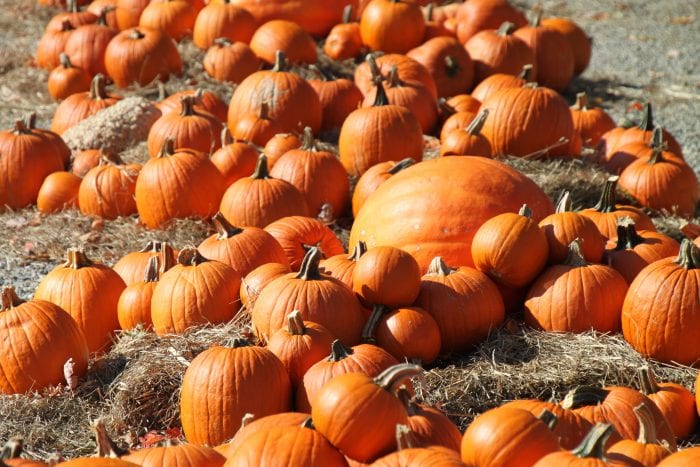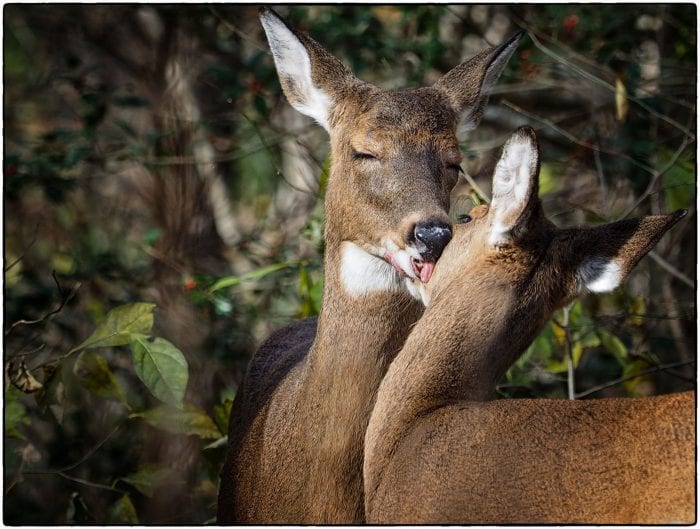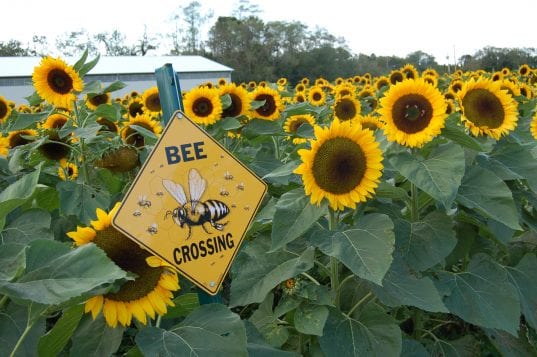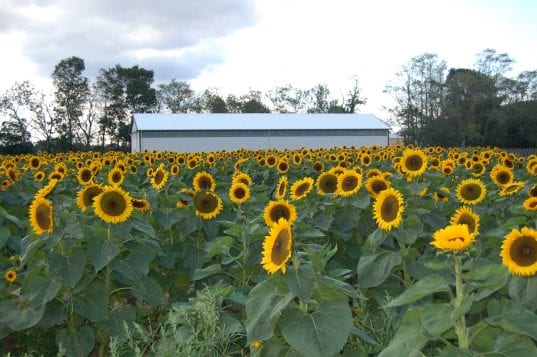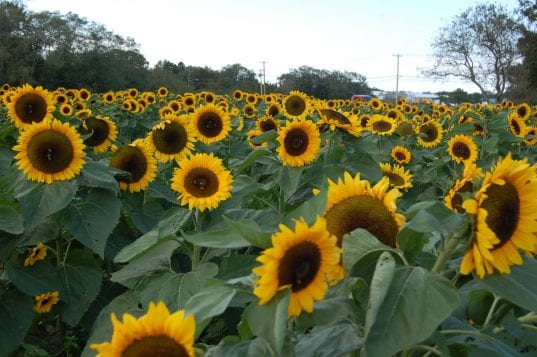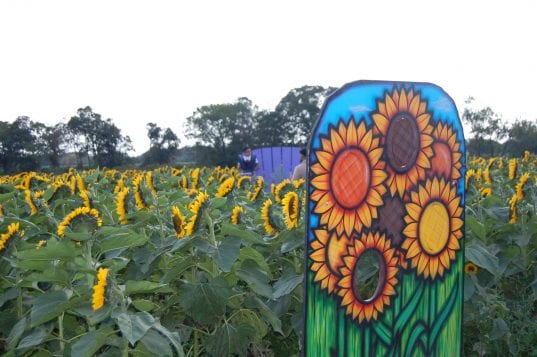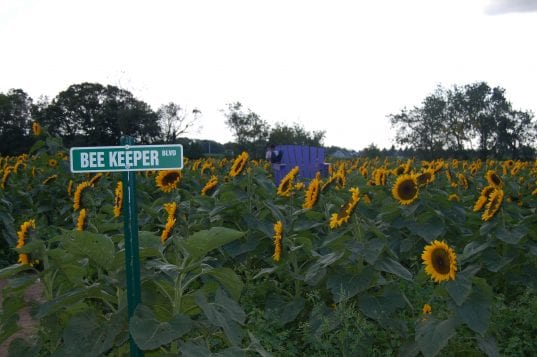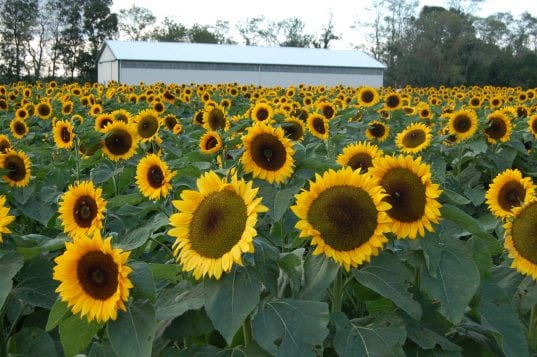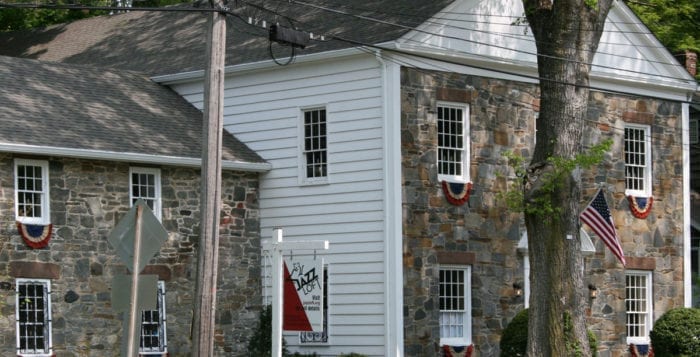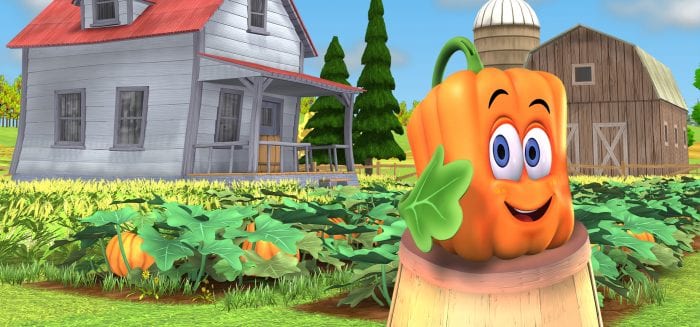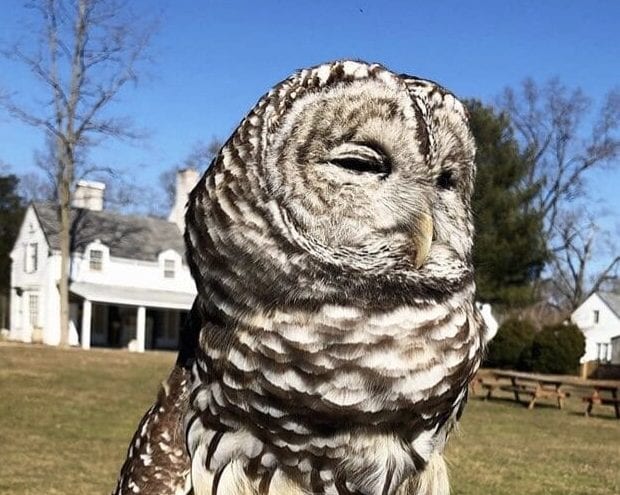The Center for Italian Studies at Stony Brook University offers a series of online Italian classes for adults designed to expose participants to the Italian language and culture. On-line courses using video conferencing and distance learning technologies are offered in Elementary, Intermediate, and Advanced Italian, each scheduled in 20 two hour sessions fr a total of 40 hours of instruction, form October 10 to April 6. Class times are Saturdays 10 a.m. to noon or Tuesdays, 7:30 to 9:30 p.m. Cost per course is $260. For additional information or for a registration form, visit www.stonybrook.edu/italianstudies or call 631-632-7444.
CSHL’s Lucas Cheadle hopes to inspire other Native Americans to join STEM
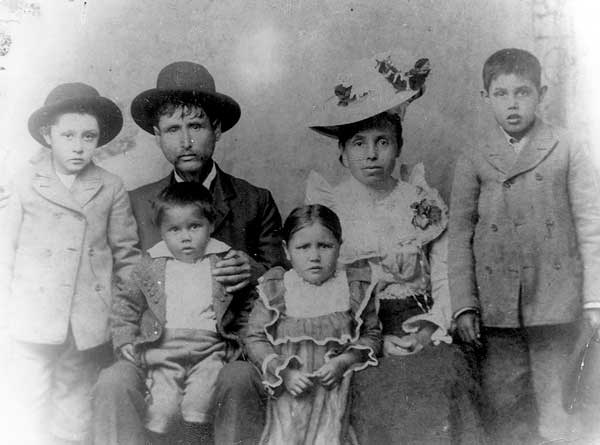
By Daniel Dunaief
In joining Cold Spring Harbor Laboratory, Lucas Cheadle has continued his professional and personal journey far from his birthplace in Ada, Oklahoma.
Then again, his travels, which included graduate work in New Haven at Yale University and, most recently, post doctoral research in Boston at Harvard Medical School, wasn’t nearly as arduous or life threatening as the forced trip his ancestors had to take.
In 1837, Cheadle’s great, great, great grandparents had to travel from Pontotoc, Mississippi to southern Indian Territory, which is now near Tishomingo, Oklahoma as a part of the Trail of Tears. Native American tribes, including members of Cheadle’s family who are Chickasaw, cleared out of their lands to make way for Caucasian settlers.

Proud of his biracial heritage, which includes Chickasaw, Choctaw, and Cherokee lineages, Cheadle hopes to make his mark professionally in his studies of the development of the brain (see article on page B). At the same time, he hopes to explore ways to encourage other members of the Chickasaw tribe to enter the fields of science, technology, engineering and mathematics.
One of three sons of a mixed Chickasaw father named Robert Cheadle and a Caucasian mother named Cheryl, Cheadle would eventually like to provide the kind of internship opportunities through his own lab that he had during his high school years.
Indeed, during the summer of his junior year, Cheadle did a health care internship, in which he shadowed different types of physicians. He watched active surgeries and observed a psychiatrist during patient visits. After that summer, Cheadle thought he might become a psychiatrist as well because he knew he was interested in the study of the brain.
Down the road, Cheadle envisions having one or two people learn as interns in the lab during the summer. Longer term, Cheadle hopes other investigators might also pitch in to provide additional scientific opportunities for more Native American high school students.
Growing up in Oklahoma, Cheadle never felt he stood out as a member of the Chickasaw tribe or as a biracial student.
His father, Robert, was active with the tribe, serving as a tribal judge and then as a legislative attorney for the Chickasaw. His grandfather, Overton Martin Cheadle, was a legislator.
Through their commitment to the Chickasaw, Cheadle felt a similar responsibility to give back to the tribe. “It was an incredibly important part of their professional lives and it was a passion” to help others, he said. “I’m driven by that spirit.”
His father took people in who had nowhere to go. In a few cases, people he put up robbed the family. Even after they robbed him, Cheadle’s father took them back. When Robert Cheadle died earlier this year, one of the people whom Cheadle supported helped out with his funeral arrangements.
Driven to accomplish his mission as a scientist, Lucas Cheadle feels he can reach out to help high school students and others interested in science during his research journey.
“The better I can do, the more I can help,” Cheadle said. He hopes to “open doors for other people.”
With some of these efforts to encourage STEM participation among Native Americans, Cheadle hopes to collaborate with John Herrington, a Chickasaw astronaut who took a Native American flute into space during one of his missions. “It would be wonderful to discuss this” with Herrington, “if he has time for me,” said Cheadle.
In modern times, the Chickasaw tribe has made “good strides” in being successful. One challenge to that success, however, is that it has included assimilation.“The main goal is to hold onto the heritage as much as we can,” said Cheadle.
As for now, he plans to honor his heritage in his lab by “working hard to create a safe, respectful environment where people’s unique backgrounds and characteristics are supported and embraced. I try to create a space where diversity can thrive.”
Giant Pumpkin Patch fundraiser comes to Smithtown
From Sunday, Sept. 27 to Saturday, Oct. 31, St Thomas of Canterbury Episcopal Church, 29 Brooksite Drive, Smithtown will be selling pumpkins of all sizes at its giant pumpkin patch! Hours are Mondays through Fridays from 2:30 to 6:30 p.m.; Saturday from 9 a.m. to 5 p.m. and Sundays from noon to 5 p.m. Pick the best for carving, decorating or painting. Masks are required with social distancing. Questions? Call 631-265-4520.
Theatre Three hosts food drive Saturday, Sept. 26
Theatre Three, 412 Main St., Port Jefferson hosts a food and person care items drive to benefit the pantry at Infant Jesus Church on Saturday, Sept. 26 from 9 a.m. to 1 p.m.
Food items needed include mac & cheese, canned pasta (Chef Boyardee, etc.), coffee, sugar, flour, pancake mix, oatmeal, cereal, mustard, mayonnaise, ketchup, cooking oil, boxed milk, juice, canned fruit, healthy snacks, fresh chicken, fresh ground beef and hot dogs.
Personal care items needed include shampoo, baby shampoo, conditioner, soap, deodorant, toothbrushes, toothpaste, baby wipes, and diapers (size 6 and newborn).
Grocery gift cards and cash will also be accepted. Donations will be collected in the back of the theater on the south side of the building. Rain date is Sept. 27. For more information, visit www.theatrethree.com.
Harvest Times: Small ways to make a big difference in helping wildlife
By John Turner
A White-tailed deer nibbling peacefully on lush green leaves along the roadside, its namesake tail twitching in the twilight of early evening. A screeching, Red-tailed hawk drawing circles around the sun, the bird of prey’s discordant call still being used today to emphasize the most dramatic moments in western movies. Its distant cousin, an Osprey, drops into a rapid stoop, hitting the water with knife-tip sharp talons flared like the legs of a claw lamp, a strategy to enhance capture of slippery fish.
The nightly summer show of incandescence put on by the otherworldly display of fireflies. The seasonal parade of Monarch butterflies feeding on seaside goldenrod at coastal beaches, filling up their migratory fuel tanks on their autumn journey to Mexico. A Grey squirrel sitting on a tree branch in a light rain, feeding on a walnut, adorned with a walnut-stained beard and moustache, its fluffy tail arched over its back and head serving as a most effective umbrella. The dancing flights of Ruby-throated hummingbirds nectaring in wildflower beds, their improbable tubular tongues gaining sustenance through the nectar the plants calculatingly provide.
If you’re like most residents who spends some time outdoors you’ve probably had one or more of the above experiences, or something similar, connecting you to the diversity of wild animals which grace Long Island’s parks, ponds and natural areas. Maybe these experiences have occurred through happenstance or due to your desire to seek them out. Either way, wild animals, what we call “wildlife,” fully living their independent, yet intertwined lives, enrich both ours and theirs and naturally leads to the question: what actions can I take to help wildlife?
Well, the short answer is there are dozens of direct and indirect things each of us can do to protect wildlife both here and further afield. A direct action? Making sure you recycle broken fishing line and not leaving it in or along the edge of a pond where aquatic wildlife, like ducks and swans, and geese, can get entangled and die.
Driving more slowly and looking for box turtles and other animals that might be in harm’s way on the road way. Minimizing bright outdoor lighting which adversely affects nocturnal animals (motion detecting lights are a good compromise between security and the needs of wildlife for darkness).
Indirect actions? Reducing energy and water use, composting the compostable portion of your garbage, recycling the recyclable part, and most importantly, generating less garbage to begin with.
Following are but a few actions for you to consider and there are many, many more, limited only by your imagination. These measures can be placed in two basic categories: things you should do and thing you shouldn’t.
Taking first those activities that you shouldn’t — paramount among them is to avoid the use of pesticides. Despite greenwashing by the chemical industry, it’s important to remember that pesticides are chemical poisons intentionally designed to kill things and they often kill many other insects and other animals besides the ones they’re designed to.
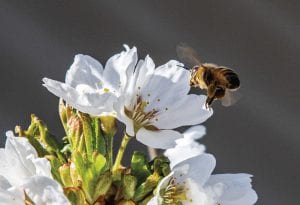
Rampant pesticide use (we use about one billion pounds of insecticides, herbicides, and fungicides annually; yes, billion, that’s not a typo) is the leading cause for the decline of scores of important pollinating insects including native bees, flies, butterflies, moths, beetles, and the European honey bee.
Many non-target mammals, birds, fish, and numerous reptiles and amphibians are harmed or killed by pesticide use too (many box turtles exposed to pesticides appear to develop painful abscesses in their middle ear cavity which can be life threatening). There is much on-line information about less destructive ways to control undesirable insects, weeds, etc., than through using poisons.
Another “don’t” action involves your cat. Cats, both feral and free roaming pets, are the leading cause for small mammals and bird deaths and their decline. Billions of mice, voles, and hundreds of millions of songbirds, involving dozen of species, are killed by cats annually in the United States. And collar bells on cats make no difference as birds don’t associate bells with danger.
Most people don’t open the front door to let their dog out, freeing it to roam the neighborhood, but don’t think twice about letting the cat out where it can and does wreak ecological havoc. While it is difficult to make a pet cat used to going outside exclusively into an indoor cat, there are transitioning strategies you can employ available on-line for review. And make your next pet cat an indoor one!!
Now for the do’s — do make your yard friendly for wildlife! Make it a cafeteria and shelter! This effort should start by planting or expanding the use of native plant species which are life sustaining for hundreds of insects which form the base of local food chains.
Doug Tallamy, in his wonderful new book ,“Nature’s Best Hope,” states that a White oak tree can sustain several hundred different species of insects — insects, both in adult and larval forms (caterpillars) that birds like Black-capped chickadees and Downy woodpeckers need to survive.
Another great native plant — a shrub — is Common elderberry (yes, THAT plant whose berries are made into wine). The small white flowers provide nectar to a variety of small pollinating insects and the red-purple berries, often produced in copious amounts, are eaten by a number of songbirds. Compare these species to non-native exotic plants, say a Winged Euonymus or Arborvitae, typically planted by homeowners and landscapers. These plants are ecological deserts never becoming part of the local food chain since no or few insects feed upon, insects which sustain so many other living things.
Add sterile lawns and we’ve created landscapes around our home that provides little in the way that wildlife needs. In contrast, planting native wildflowers, shrubs, and trees is a highly effective strategy for hosts of animals that feed on the bounty that native plants provide in the form of nectar, seeds, fruits, and nuts.
And leaving leaf cover in your flower beds and other out of the way places during the autumn cleanup provides shelter from the winter’s cold for a variety of overwintering caterpillars and other insects.
Placing decals on your home’s windows is another measure you can take around your house to meaningfully help birds. Nearly a billion birds in North America are estimated to die annually from flying into building windows they don’t see, due to either of the two deadly characteristics windows possess — transparency and reflectivity. Hummingbirds are especially common collision victims. There are several type of attractive decal products available for purchase on-line which, when installed, help enable birds to see windows for what they are.
By now you may have had the thought — John, you’ve discussed these other ways to help wildlife but what about perhaps the most obvious way: by feeding birds. In truth, that’s a common and pervasive misperception as feeding birds does nothing to help them survive since no wild bird species depends upon backyard bird feeding stations to continue to exist.
Wild birds are quite adept at finding enough wild food for themselves even during the winter and for their young during the breeding season to survive. They don’t need or depend on the seed, suet, sugar water, jelly, and oranges many homeowners put out to entice them. And the species that frequent backyard feeders — Black-capped chickadees, Tufted titmice, Common grackles, Carolina wrens, and a variety of woodpeckers — are common suburban birds whose populations are doing well. The species whose populations are declining and are in trouble — many migratory warblers, vireos, swallows, swifts, nighthawks, thrushes, and flycatchers — rarely, if ever, frequent feeders.
So, if you’re feeding birds because you enjoy watching them up close that makes sense (a point hard to argue given their beauty and fascinating behaviors!), but if you’re feeding them because you think individual birds and species of birds need your help, it would be better to spend the bird feed money by writing a check to a bird conservation advocacy organization like the National Audubon Society (the local chapter is the Four Harbors Audubon Society) or the American Bird Conservancy.

Even better, you should take some of the money you’ve saved and buy a federal Duck Stamp, one of the best kept secrets in conservation. More than five million acres of wildlife habitat have been permanently protected, purchased through the use of Duck Stamp funds, including much of the National Wildlife Refuge system (we have some wonderful refuges on Long Island you can explore like Wertheim and Elizabeth Morton).
Simply stated, animals need habitat to survive. Like us, they need water, food and shelter and the Duck Stamp program has provided a way to protect huge expanses of habitat. Buying land that contains valuable wildlife habitat can help bird species survive. Duck stamps are available for purchase at a place which has been much in the news lately: your local Post Office.
A resident of Setauket, John Turner is conservation chair of the Four Harbors Audubon Society, author of “Exploring the Other Island: A Seasonal Nature Guide to Long Island” and president of Alula Birding & Natural History Tours.
*This article first appeared in Harvest Times 2020, a supplement of TBR News Media
Harvest Times: Baiting Hollow farm reprises sunflower mazes for fall fun
By Melissa Arnold
With cooler weather on the horizon and a bit of normalcy returning to Long Island, there’s no better time to get out and enjoy some fresh air. If you’re looking for a fun and safe outdoor activity that’s out of the ordinary, a trip to Rottkamp’s Fox Hollow Farm in Baiting Hollow is just the ticket.
This year, the farm has planted a sunflower maze for the first time. Following the success of sunflower mazes grown earlier this summer, co-owner Jeff Rottkamp has planted a new series of mazes that will bloom in the fall.
The family-owned farm has been in business for more than 50 years now, with centuries of agriculture in their blood. Fox Hollow is currently run by Jeff, his parents and brother, with help from other relatives.
In recent years, people have flocked to the farm to enjoy the season’s bounty along with hayrides and corn mazes, but this year, the Rottkamps were excited to try something new.
“I’ve been seeing sunflower mazes popping up online from places all over the country, and I liked the way they looked,” Rottkamp said. “I knew it was something we could do and I thought people would find it fun. We did a brief trial run last summer and the feedback was extremely positive, so we were happy to do it again officially.”
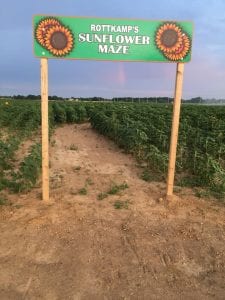
Rottkamp’s Fox Hollow Farm
Setting up any kind of crop maze is a process that requires an imagination and a lot of planning in advance, Rottkamp said. First, you have to select the right field — not too large, not too small, and in just the right spot on the sprawling grounds. Planting begins two months ahead of when they want the maze to be ready.
“Sunflowers need a lot of maintenance and careful watering,” he added. “I come up with the pathways at random each time we plant a field, so it’s a new experience every time.”
There are several varieties of sunflowers in different colors and sizes. In addition to the familiar golden petals, you’ll see sunflowers in shades of pink, maroon and white. Most of the sunflowers will grow to be 4 to 6 feet tall, but there will also be scattered sunflowers around 10 feet tall.
Of course, a maze made of living things can only last so long — sunflowers are only in bloom for about two weeks. To counter this, the farm is planting three different fields of sunflowers at staggered times. When one dies out, the next will be ready to go, and each one is different from the last.
The three fields are also different sizes. In order of growth, they are 1 acre, 4 acres, and 3 acres. But don’t worry about getting lost. “It’s not that kind of maze, it’s not a puzzle. It’s more of a wandering path that you can take your time going through, to take pictures and have a little bit of fun,” Rottkamp explained. “No one will get lost, and this is appropriate for all ages to enjoy.”
Before or after your trip through the maze, be sure to stop by the farmstand and pick up fresh, seasonal produce. Autumn will bring in the last of the sweet corn and tomatoes, as well as pumpkins, winter squash and zucchini, among others.
There are treats for sale as well, including local honey, Tate’s Bake Shop cookies, and fresh pies and donuts from the Jericho Cider Mill.
The mazes will be open for wandering throughout September and into October if the crop and weather permit.
Admission to the Rottkamp’s Fox Hollow Farm sunflower maze is $5 per person. Children ages 5 and under are free. The farm is located at 2287 Sound Avenue in Baiting Hollow. For further information, please call 631-727-1786.
This article first appeared in Harvest Times 2020, a supplement from TBR News Media.
All photos by Heidi Sutton
Gardiner Foundation Awards $40K to The Jazz Loft
Tom Manuel, founder of The Jazz Loft in Stony Brook, is always grateful when someone comes along and offers a helping hand, but during the pandemic, his gratitude is overflowing.
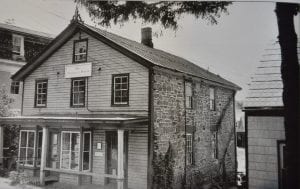
Before New York State’s mandatory shutdowns, the Robert David Lion Gardiner Foundation awarded The Jazz Loft a grant in the amount of $40,000 to match funds coming from local resident and patron Dan Oliveri.
The money is being used to renovate the southwest section of the basement, which is under the Old Stone Jug area of the venue. The undertaken has been dubbed Project Coal Bin, Manuel said. While the basement dates back to 1941, the Old Stone Jug was built in approximately 1770. The grant also covers equipment needed to archive information.
“What’s exciting is it’s going to be a multipurpose space where the grant was designed not just to redesign the space but to outfit it as an area that will be used for our archiving,” The Jazz Loft founder said.
He added that the Stony Brook University Department of Computer Science worked last year to design the computer programming for the archiving, which will open up doors for other grants in the future for additional archiving and preservation.
“It’s amazing how a group like the Gardiner foundation could allow so many great things to happen even indirectly after their grant is done,” he said.
He called RDLGF a lifeline for nonprofits and a “blessing for people on Long Island.” The admiration is mutual.

“The Jazz Loft is an exceptional organization that engages the community on many levels,” said Kathryn Curran, executive director of the RDLGF. “The adaptive reuse of their historic building brings new and inventive life to this early structure celebrating the history of jazz through performances and art and artifacts.”
While the grant process was lengthy, Manuel said it was an excellent experience for him where before the pandemic he sat in on a grant-writing workshop given by Curran, and was able to exchange ideas with others. He said it was inspiring to learn about grants and the bigger picture of the longevity of nonprofits and the history of Long Island.
“After a while you realize, wow, it’s not so much about me writing this grant anymore,” he said. “It’s about The Jazz Loft being here for 100 years. This is about being responsible with what has been entrusted to me.”
Manuel also praised RDLGF for the funds they granted to nonprofits during the pandemic. Curran said the board was aware of the new problems nonprofits faced in 2020, and in June the board members approved a limited reimbursement grant to historical societies. The grants were intended to help organizations cover expenses during unscheduled closings. In total, RDLGF awarded more than $63,000 to help pay bills over a three-month period.
As for Project Coal Bin, Manuel said work began a couple of months ago. He indicated before major construction could begin, the old drop ceiling had to be removed in the section of the basement, while the plumbing and the electrical system needed to be updated. Manuel said when a person is downstairs and looks up, the hand-hewn beams of the Old Stone Jug are now visible after 80 years following the removal of a plaster ceiling.
The section of The Jazz Loft is called the Old Stone Jug due to its facade and was added by philanthropist Ward Melville, who moved the structure from its original location and made it an addition to what was once the original Stony Brook firehouse. It was then used as the Suffolk Museum, the forerunner of The Long Island Museum. Before it was moved, the Old Stone Jug, through the decades, was utilized for town meetings, operated as a tin shop and was used to store molasses jugs.
Manuel said they named the new section of the basement the Coal Bin after a former establishment in Southampton called Bowden Square. The owner Herb McCarthy’s mother would cook southern food and play jazz music for Black patrons in the basement, called the Coal Bin, during a time when Southampton was segregated.
Manuel said renovations in The Jazz Loft basement are projected to be completed before the end of the year.
Photo of Week
LATE SUMMER BLOOMS
Port Jefferson Village Gardener Caran Markson captured this colorful scene of one of her own gardens in Mount Sinai overflowing with orange Zinnias, white Dahlias and pink 4 O’Clocks on Sept. 13.
Send your Photo of the Week to leisure@tbrnewspapers.com
Adorable Halloween show for the kids heads to Smithtown
‘Spookley the Square Pumpkin’
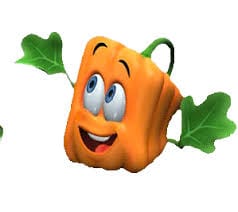 In partnership with the Smithtown Historical Society (SHS), the Smithtown Center for the Performing Arts presents a performance of “Spookley the Square Pumpkin: The Musical,” the story of a square pumpkin living in a round pumpkin patch, in the open air outdoor space behind the SHS’s Roseneath Cottage, 239 E. Main St., Smithtown on Oct. 10, 12, 17, 18, 24, 25 and 31 at 11 a.m. and 1:15 p.m. Masks are required for this socially distanced production. All seats are $18 at www.smithtownpac.org.
In partnership with the Smithtown Historical Society (SHS), the Smithtown Center for the Performing Arts presents a performance of “Spookley the Square Pumpkin: The Musical,” the story of a square pumpkin living in a round pumpkin patch, in the open air outdoor space behind the SHS’s Roseneath Cottage, 239 E. Main St., Smithtown on Oct. 10, 12, 17, 18, 24, 25 and 31 at 11 a.m. and 1:15 p.m. Masks are required for this socially distanced production. All seats are $18 at www.smithtownpac.org.
Sweetbriar Nature Center takes part in nature talk and raptor sketch night on Sept. 26
UP CLOSE AND PERSONAL
Sweetbriar Nature Center heads to Stony Brook and Setauket for special family friendly events on Saturday, Sept. 26.
Sweetbriar visits Reboli Center
In perfect harmony with its current exhibit, Wild and Wonderful by Vicki Sawyer, the Reboli Center for Art and History, 64 Main St., Stony Brook welcomes the staff of Sweetbriar Nature Center and some of its resident animals including owls for an outdoor nature talk from 2 to 3 p.m. Rain date is Sept. 27. Free. To make a reservation, call 751-7707 or email [email protected].
Sweetbriar Raptor Sketch Night
Join Gallery North, 90 North Country Road, Setauket for a special Raptor Sketch Night from 3 to 5 p.m. Sweetbriar Nature Center in Smithtown will bring over birds of prey for a workshop that will bring nature lovers and artists together for a unique evening of sketching and learning. $40 per person, $60 for a family of four includes all materials. To register, visit www.gallerynorth.org/thestudio. For more info, call 751-2676.



